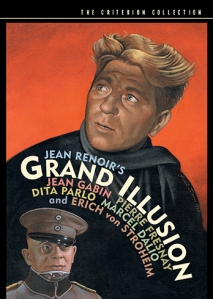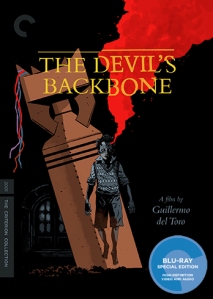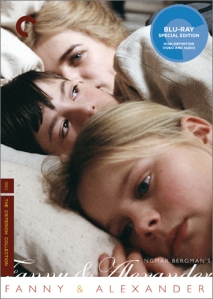Criterion Collection and the Spine Number
“I wish I knew how to quit you.” As much as Jack Twist’s love to Ennis is torturous, it just shows how deep that love is. Same thing can be said to the obsessive devotion to the Criterion Collection from the large fan base, accrued from the generation of Laser-disc to the millennium format of DVD, up to the current high-definition era in Blu-ray, not to mention the trends of online streaming. Being the pioneering home video distribution company, Criterion Collection earns the label of “film school in a box” reputation in the physical medium. While the die-hard fans may call upon themselves the “Criterion Collectors” (i.e. owning every DVD and/or Blu-ray release, which is a tremendous and arduous task alone), the enthusiasm from time to time would go beyond possession and dive into the realm of geekiness. The selection of the films itself and the potential rumors, the wacky drawing at the beginning of every year as well as the hints in the newsletter every month, the cover designs and the supplements, etc. In the following text, I will dig into another rabbit hole named “The Spine Number“. Just like drawing lines between stars and studying the constellations in astrology, or interpreting the tea leaves pattern and telling the fortune in tasseography, I aim to tackle the mystery behind the spine number, starting with the practicality of its usage, and its significance from the collectors’ point of view. Then I will attempt to find implications, if any, between the spine number and the films themselves, including some observations on the regular pattern, and exceptional examples in the deviation from this arrangement.
Spine number, as its literary meaning, is the number allocated to a specific release that is shown on the spine of the package. The use of the spine number in Criterion Collection was begun in the Laser-disc era, and was later adapted to the release of DVD and Blu-ray. My main focus would be on the latter, but the functions discussed below maybe applicable on both situations. From the company’s standpoint, the spine number is used as a practicality for management and communication. It gives a subjective individual distinction from film to film, making each one readily searchable. The numbering loosely reflects the releasing sequence (which is not strictly followed, as I will explain later), and in accumulation, displays the amount of time and efforts yielded by the company, that could not be demonstrated explicitly just by arrangement in alphabetical order. Most importantly, it generates a sense of continuity from one film to another, sometimes completely opposite in style and genre; hence the consistently expanding collection can be viewed as a single unification. Hence, one way or another, this could be beneficial to the company financially , as one may find missing a “number” in-between two films is a good enough excuse to buy that particular release, fueled by the compulsion for completion.
For those “Criterion Collectors”, including myself, there is always a sign of the compulsive obsessive disorder in accordance with the spine number, say, the organization of the discs in the ascending order; reviewing, blogging or pod-casting the films accordingly. With a more serious symptom, one may start to wonder any significant meaning to the “number” itself. As I stated previously, the number is given to a particular release by the order of announcement and/or distribution, but there are exceptions. Normally it is due to the delay of the release, just like the release of #1 “Grand Illusion” was considerably postponed for the sake of the restoration work needed when a new negative was found unexpectedly. Therefore, even as “Grand Illusion” is listed as #1, it was not the first Criterion DVD released in the market. This sort of news may sound trivial, but fundamentally important in the history of physical media, in particularly Criterion Collection.
The choice of film for #1, maybe even #2 and #3, could be momentous. In the Laser-disc releases, “Citizen Kane”, a film that is considered to be the greatest film of all time as shown by various film polls, is deservedly granted the #1 slot. Although “Grand Illusion” may not share the same achievement as “Citizen Kane”, undoubtedly it is still a masterpiece, a significant work from the French auteur Jean Renoir; it was even the first foreign language film to be nominated for Best Picture in the Oscar. Together with the Japanese monument action film “Seven Samurai” as #2, it demonstrated Criterion’s determination in introducing and promoting foreign language film besides other readily available English-speaking films. One extraordinary use of the spine number was #666, which was inevitably given to the symbolically hideous film “The Devil’s Backbone“. But this kind of direct interpretation is extremely rare.
The numbering system subjectively reflects the elapse of time, thus the evolution of the company. #100 and its multiples are definitely the milestones for the Criterion Collection, or so as I thought. “Beastie Boys Video Anthology“, a unique entry in the entire collection since it’s a compilation of music videos, took the place of #100. Two Wes Anderson films are honored with the same fashion (#300 for “The Life Aquatic with Steve Zissou“; #700 for “Fantastic Mr. Fox“, the first animation in the collection, excluding “Akira” in the Laser-disc release). #400 “Stranger Than Paradise” and #600 “Anatomy of a Murder” both earned its place, but I can hardly claim “The Honeymoon Killers” merits the same treatment as #200. On the other hand, Criterion did it absolutely right in #500, regarding “Roberto Rossellini’s War Trilogy” box-set as the landmark for the entire collection. These three films by Roberto Rossellini, the fine exemplars of Italian neo-realism after WWII, epitomize the importance of how filmmakers shaped the world with the tool of cinema.
The aim to place the box-set on the spot of #500 was apparently intentional, since it broke the regular pattern of numbering in the box-set. Except in several occasions, a box-set itself would be allocated with a specific spine number, and the comprising films with the consecutive numbers. The earliest example in the Criterion Collection is #66 “The Orphic Trilogy”, the three films included, by the releasing order of the films, are #67 “The Blood of a Poet”, #68 “Orpheus”, and #69 “Testament of Orpheus”. This has become the normal practice of the box-set numbering, just like the recent release of “The Apu Trilogy” as #782 (“Pather Panchali” as #783; “Aparajito” as #784; “Apur Sansar” as #785). So how and why did the exceptions happen? First and foremost, #500 “Roberto Rossellini’s War Trilogy” is numbered after the three films #497 “Rome Open City”, #498 “Paisan” and #499 “Germany Year Zero”. The reason is obvious and self-explanatory as described in the previous paragraph.
But there are occasions of a compilation of films, which with individual spine numbers, issued in a single release but lack of the naming and/or numbering of the box-set. This can be noted as early as the release of “The Samurai Trilogy“, while the three films are numbered with #14, #15 and #16 respectively, the Trilogy itself was devoid of spine number. Sometimes it is the result of a re-release of previous films in a single set, like “Grey Gardens / The Beales of Grey Gardens Box Set” or recently “André Gregory & Wallace Shawn: 3 Films”, albeit this observation is not absolute. #5 “The 400 Blows” is one of the earliest release of the Criterion Collection, it was later grouped with the remaining Truffaut films that follow the same character in “The Adventures of Antoine Doinel” box-set, and the set itself is numbered with #185. The main difference is, the no-number box-set is composed of films that can be bought separately, making it a bargain for those who own none of them; in contrary, all (or most) of the films are exclusively included in the numbered box-set, so one have to buy all or nothing.
Yet, not every films included in a numbered box-set are honored with a spine number. Sometimes the total sum of films included is quite enormous, most notably in #679 “Zatoichi: The Blind Swordsman”, the 25 films in the series are devoid of individual spine number. Occasionally it’s a whole set of works, feature-length or not, from a particular director/artist, like #79 “W. C. Fields—Six Short Films”, #578 “The Complete Jean Vigo”, #607 “A Hollis Frampton Odyssey”, #655 “Pierre Étaix” and #737 “Les Blank: Always for Pleasure”. Infrequently, even a set of double features is provided with one spine number only, like #176 “The Killers” which comprise the 1946 Robert Siodmak version and the 1964 Don Siegel one (Andrei Tarkovsky’s short film adaptation is also included as a supplement). Other notable examples included #232 “A Story of Floating Weeds/Floating Weeds: Two Films by Yasujiro Ozu”, #239 “The Lower Depth”. The downside is, intentionally or not, diminishment of the films’ magnitude which are devoid of numbering, one may regard those as secondary or inferior to other main features. The psychological influence may further affect our judgment on the quality of the films. Hence, the responsibility of the spectators is to view the films subjectively. Still this is easier said than done.









Also interesting is DVD discs with spine numbers that lose their designation when combined on the larger BD discs. “the Making of Fanny and Alexander” and “A Constant Forge” come to mind. Great article!
LikeLike
Yes, same thing happened to “The Beales of Grey Gardens” too. Thank you for the further information.
LikeLike
Excellent piece and a great topic to have chosen… and now that #800 has been announced, I think it pretty well backs up everything you’ve written.
LikeLike
It’s a great coincidence that #800 was announced the day after my article published (And I guessed it would be THE GRADUATE and I’m right, shameful that I haven’t written it down first lol). I’m surely glad you enjoy the article, let us looking forward to #900 and #1000!
LikeLike
Yes, I wonder what #1000 will be. I’m pulling for “Citizen Kane” too.
Fantastic post. I never would have thought to do an essay on the spine numbers, let alone make it an engrossing as yours. Great idea!
Thank you so much for joining the blogathon with this look at Spine Numbers. 🙂
LikeLike
I’m glad you enjoy the article, and thank you for providing an opportunity for me to join the Blogathon, what a great week we have!
LikeLiked by 1 person
Fantastic article. I own a lot of these spine numbers and of course we do think about these in patterns, and there seems to be enough evidence that it is intentional. You have summarized that well. Similarly as Devil’s Backbone, the spine number for The Brood was 777, which is probably intentional as well.
LikeLike
That’s right The Brood! Thanks Aaron for the additional info, I wonder would there be some more that we are missing.
LikeLike
What a clever topic and good post, the numbering question always appeals to the collector in us and adds a level to the anticipation when waiting for announcements. Really great approach and thanks for taking part in the blogathon!
LikeLike
Thanks Kristina and your tremendous effort in hosting the Blogathon, it has been a fruitful week!
LikeLiked by 1 person